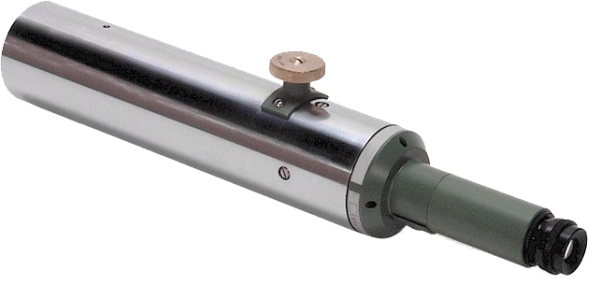
Optical Instruments Like Transits & Collimators Need Tune-Ups Too

Optical instruments hold a pivotal role across diverse domains, including surveying, astronomy, military operations, and meteorology. Be it surveyor transits, optical collimators, precision telescopes, night vision devices, tactical helmet cameras, or meteorological theodolites, their accuracy and reliability stand as cornerstones for precise measurements and observations. To ensure peak performance of these optical instruments, consistent calibration and maintenance become indispensable. This piece delves into the significance of upholding optical instrument quality through calibration and maintenance, the effects of wear and tear, the role of a precision instrument company, and the crucial aspect of re-calibrating to NIST (National Institute of Standards and Technology) standards.
Calibration and Maintenance: An Indispensable Requirement
First and foremost, what does calibration entail, and why is it pivotal for optical instruments? Calibration refers to the process of fine-tuning an instrument to guarantee accurate and reliable measurements or observations. This fine-tuning addresses any deviations or inaccuracies in the instrument's readings, instilling trust in the obtained data. Consistent calibration ensures the sustained precision of optical instruments, enabling them to perform optimally.
For calibration, maintenance, and repair services for optical instruments, certain precision instrument companies specialize in these tasks. These expert service providers offer precise instrument calibration for optical tools like alignment collimators and transits utilized by surveyors and civil engineers. Opting for a reputable company with a proven track record in instrument calibration is imperative. They play a crucial role in maintaining your optical instruments at their best, ensuring the accuracy of your measurements and observations.
Normal Wear and Tear: The Unseen Challenger
Over time, even finely crafted optical instruments face wear and tear. Factors such as environmental conditions, frequent usage, and manufacturing precision contribute to deviations in an instrument's performance. Some common issues linked to normal wear and tear include:
1. Misalignment: The precise alignment of internal components in optical instruments is crucial. Over time, vibrations, shocks, or mishandling can lead to misalignment, resulting in inaccurate readings or observations.
2. Lens Degradation: Accumulation of dust, dirt, and moisture on optical instrument lenses can degrade image quality and reduce accuracy.
3. Mechanical Issues: Moving parts within instruments, such as gears and focusing mechanisms, experience mechanical wear that can affect overall performance and accuracy.
4. Temperature and Humidity Variations: Extreme fluctuations in temperature and humidity can cause changes in an instrument's internal components, impacting calibration.
5. Electronics and Sensors: Electronic components and sensors in precision instruments may degrade or malfunction over time, causing calibration issues.
Adhering to NIST Standards: The Gold Benchmark
When considering optical instrument calibration, a reputable precision instrument company adheres to the gold standard of NIST. The National Institute of Standards and Technology sets rigorous benchmarks for precision and accuracy in measurements. Recalibrating optical instruments to NIST standards guarantees they deliver highly accurate and reliable data.
NIST-traceable calibration not only assures measurement quality but also adds credibility to one's work. It is often a requisite in numerous industries and research projects. Whether you are a land surveyor, astronomer, meteorologist, or military professional, adherence to NIST standards is pivotal in upholding observation and measurement integrity.
Recalibrating to NIST standards involves a stringent and standardized process. Specialized repair services for optical instruments and calibration laboratories utilize highly precise reference standards and equipment to compare optical instrument performance with established NIST standards. Any deviations from the standards are meticulously recorded, and adjustments are made to realign the instrument.
Two Authoritative Resources for Calibration and NIST Standards:
1. The National Institute of Standards and Technology (NIST): The official NIST website offers comprehensive information on standards, calibration procedures, and resources related to precision measurements. (URL: https://www.nist.gov)
2. The Precision Measurement Equipment Laboratory (PMEL): Responsible for calibrating and maintaining precise measurement equipment used by the United States Department of Defense, PMEL's calibration guidelines and procedures are highly esteemed in the field of metrology.
Final Thoughts
The accuracy and reliability of optical instruments hold utmost importance across various fields, spanning from surveying and astronomy to military operations and meteorology. To ensure optimal instrument performance, regular calibration and maintenance are imperative. Seeking the assistance of a reputable precision instrument company for calibration and repairs is crucial.
The impact of normal wear and tear on instrument performance underscores the need for proactive monitoring and maintenance.
Lastly, recalibrating optical instruments to NIST standards plays a vital role in upholding measurement and observation integrity. It not only guarantees the highest level of accuracy but also establishes credibility within respective fields. Adhering to NIST standards assures that your optical instruments provide the most accurate and reliable data possible, empowering informed decisions and precise research.
In the realm of precision instruments, the phrase "measure twice, cut once" takes on new significance. With the right calibration and maintenance protocols, you can trust that your optical instruments will consistently deliver accurate measurements, every time.
0 Comments Add a Comment?